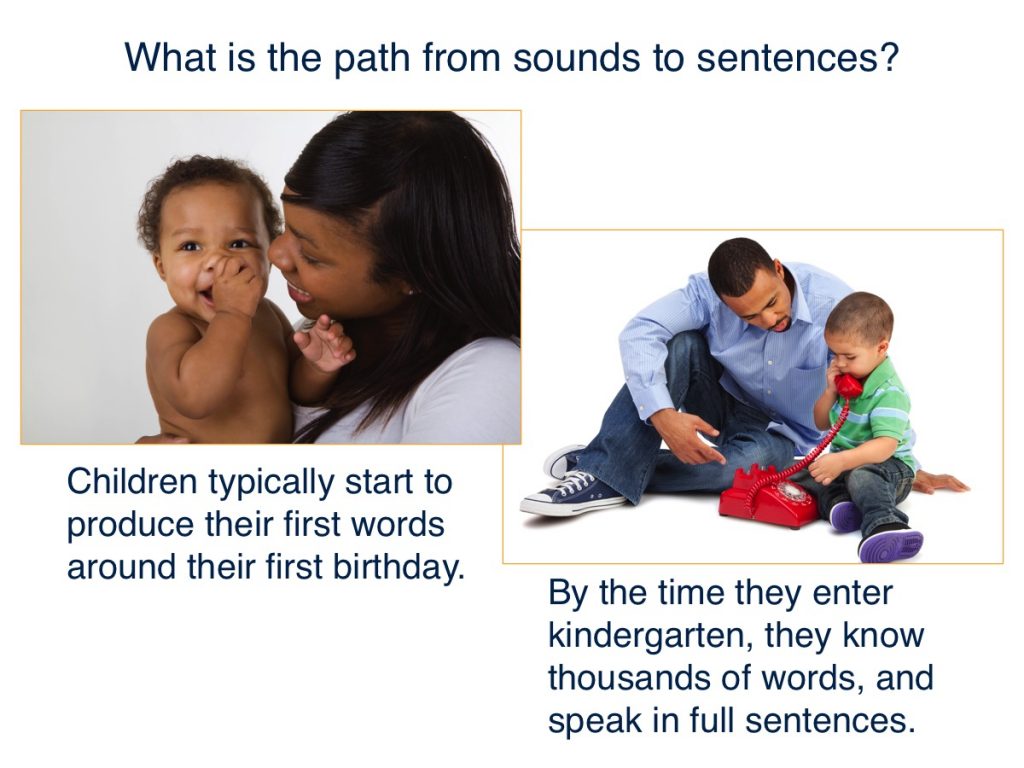
Language learning begins before birth. In the module “Language Development: Learning the Sounds of Language,” we discussed the importance of listening to language during the first year of life. A child’s experience with speech sounds establishes a foundation for later speaking. But how do children transition from only listening to speech sounds to speaking themselves? Research shows that children across cultures and languages follow the same general learning pattern. They begin by producing individual sounds and syllables of language. Next, they transition to words. Finally, they begin to use full sentences. In this module we will review the latest research on the development of language production, or speaking.
-
- Back-and-forth or contingent interactions
- exchanges where a caregiver times her responses to a child’s behavior
- Canonical babbling
- producing the same consonant and vowel over and over, such as dadada
- Infant-directed speech
- a special tone and style of speech used to talk to young children. It’s also called parentese
- Joint attention
- shared attention between social partners to an object or event
- Overextension
- using a word to describe more object categories than it actually represents
- Underextension
- failing to extend a word to other objects in the same category
- Vocabulary spurt
- rapid growth in word learning